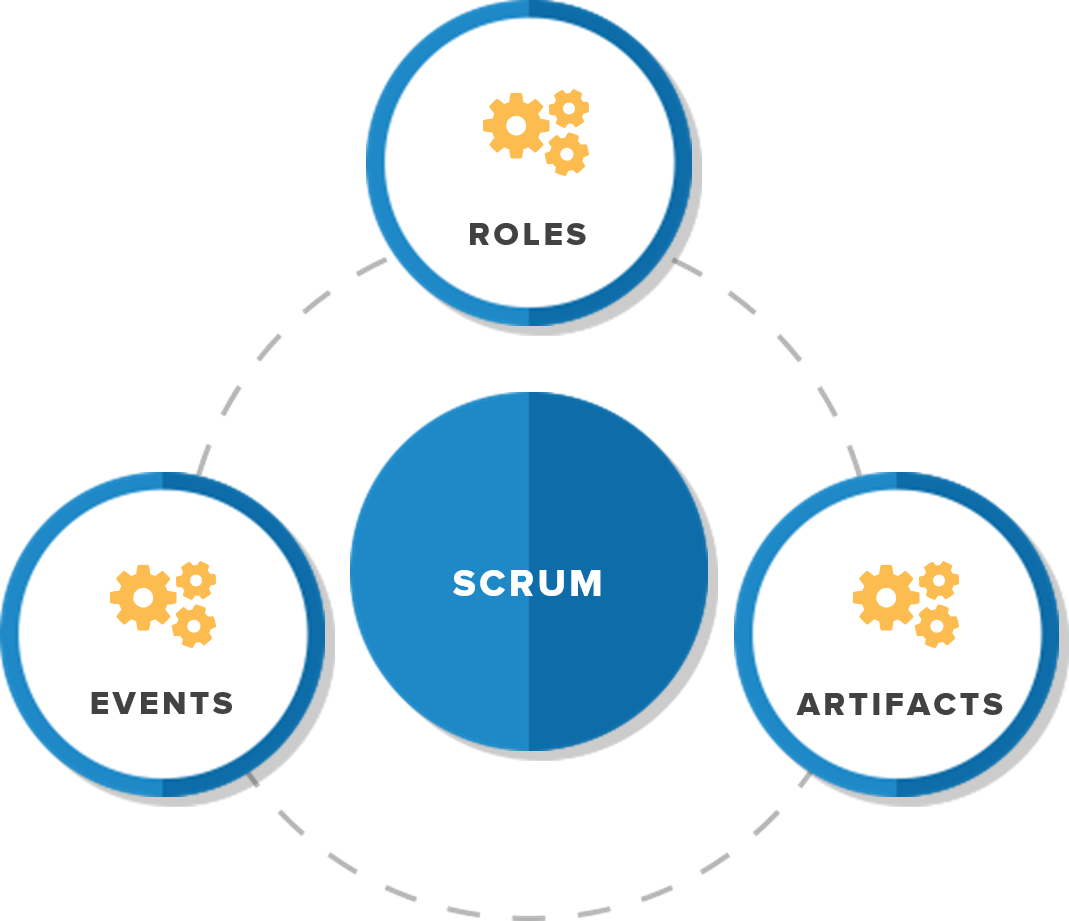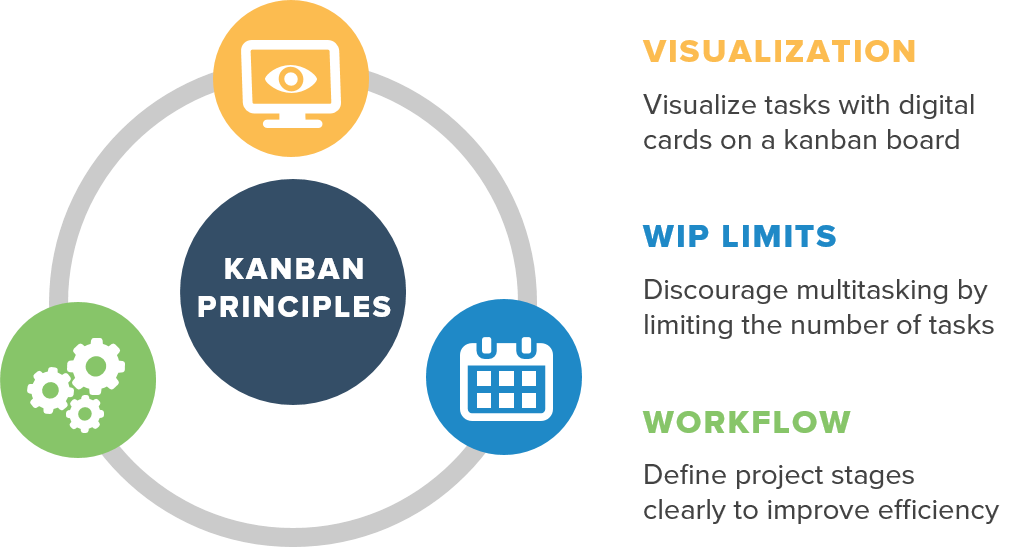Two Agile Frameworks Small Businesses Should Know About
In a VersionOne survey, 84 percent of respondents said that their organizations still didn’t have mature agile practices in place. This means businesses are executing agile without really understanding how agile processes works, which eventually causes project failure.
Gartner’s “Become an Agile Superhero: 8 Attributes for Success” report (content available to Gartner clients) says that successful agile teams must have sound knowledge of agile processes and techniques.
Small businesses, take note: To achieve project success, you must gain clarity on at least the most basic agile frameworks. As most agile teams follow two basic frameworks, i.e., scrum or kanban, the road to attaining “agile maturity” begins by understanding these two frameworks.
Small and midsizes businesses (SMBs) that execute projects without a sound understanding of agile frameworks will have dysfunctional teams with low morale. They’ll also struggle to meet project deadlines.
In this report, we will look at both frameworks, when small teams should use each one and the different agile tools that can help them execute effectively.
Here’s what we’ll cover:
Build Team Ownership With Scrum
Improve Team Productivity With Kanban
Build Team Ownership With Scrum
What is Scrum? Scrum is the most popular agile framework, with 66 percent of all agile frameworks being scrum or scrum variants.
It helps software development companies handle large projects in small iterative phases called “sprints.” These are time-boxed events where the development team completes a series of tasks within a larger project.
Key ideas behind scrum
Roles**:** Scrum divides the team into three primary roles—product owner, scrum master and the development team.
Events: Scrum events include sprint planning, daily scrum, sprint review and sprint retrospective. Teams use these events to execute projects and refine the process.
Artifacts: Scrum artifacts include the product backlog, sprint backlog and increment. Collectively, these allow teams to prioritize tasks and deliver projects within agreed timelines.

Scrum methodology
Why SMBs should use scrum: Scrum boosts team ownership with its defined workflows, clear roles and constant project tracking. Small businesses that need teams to makes decisions faster and take full responsibility for project deliverables will benefit by using this framework.
Considerations for SMBs during adoption: Scrum is considered a lightweight agile framework, which is why it may not be sufficient for all teams. For instance, kanban (more on this later) may be a better option if you measure project progress as a continuous flow rather than in time boxes.
In addition, companies often pair scrum with other agile frameworks, such as Extreme Programming, when multiple teams (DevOps, UI/UX etc.) need to collaborate to build the product.
What’s more, Scrum isn’t necessarily right for every company. Here are two factors that will help you understand whether your business will benefit from using scrum:
Client influence: When working on client projects, you’ll need to prioritize their requests over tasks in the sprint. As a result, your teams may not complete all the tasks they committed to doing in the sprint planning sessions.
Team discipline: Scrum demands adherence to its events (workflows consisting of team meetings) and values. Teams that lack the right set of scrum values and the focus to wholeheartedly participate in the events will plan projects poorly and make inaccurate sprint expectations.
Small businesses following scrum should constantly refine and customize the process to suit their team and business priorities. Watch out for pitfalls such as overzealous product owners coercing teams into setting unrealistic sprint expectations in sprint planning meetings.
When scrum meetings go wrong, it diminishes team productivity instead of improving performance. That’s why, SMBs shouldn’t think of scrum as a project management process to manage teams. Rather, it’s a framework that empowers teams and can considerably improve their productivity, when supported with the right scrum tools.
How scrum tools help: Scrum tools come with specific functionality that improve project planning and collaboration during the execution phase. Here’s a quick look at the three ways these tools can help scrum teams:
Efficient planning: Allow teams to create user stories and estimate the effort required to complete them during sprint planning meetings. This helps in understanding project requirements better by breaking them down into tasks, which can then be added to the sprint and completed in a time-boxed event.
Better execution: Communicate with different team members by leaving comments in online workspaces or via one-on-one chat. Store and share important project documentation and files in a centralized location.
Effective monitoring: Track key tasks with scrum boards and visualize overall sprint progress using burndown charts. Also, analyze team performance via reports such as velocity charts.
Improve Team Productivity With Kanban
What is Kanban? As an agile framework, kanban is a work management method that doesn’t follow a top-down, instruction-giving approach. Instead, members use a pull system that divides tasks into simple workflows (i.e., “to be done,” “in progress” or “done”).
This makes it easy for members to identify and work on the most important tasks as well as efficiently manage their time and improve production.
Key ideas behind kanban
Visualization: Kanban boards can visualize the different kinds of tasks that teams need to perform in a project. You can either use sticky notes on physical whiteboards or kanban tools to map digital cards (representing tasks) on online dashboards.
Work in progress (WIP) limits: These are the number of in-progress tasks that need to be completed before you can add new tasks. It’s the kanban technique to discourage multitasking by allowing employees to focus solely on key tasks.
Workflow: Tasks in the kanban method move along different stages until they’re completed. Having clearly defined stages, known as the project workflow, helps teams identify bottlenecks that diminish efficiency and cause project delays.

Kanban principles
Why SMBs should use kanban: It’s a visual work management method that helps employees improve their existing project management processes by making incremental and low-risk changes.
Small businesses can use it to make small tweaks in how their team manages projects, without making overwhelming changes in the team structure or work culture.
Considerations for SMBs during adoption: The fact that kanban is a flexible framework without prescriptive rules doesn’t mean businesses should overlook key elements to successfully adopt this method.
Below are Gartner’s recommendations from its report, “Improve IT Operations Agility and Efficiency with Kanban” (content available to Gartner clients), on how to optimize the kanban process. Small businesses will benefit by following these tips:
Identify your team’s work process: Break down the work into a series of tasks that will help team members visually understand task requirements and dependencies.
Build the kanban board: Create a physical or online whiteboard consisting of sticky notes or digital cards with at least two columns: “ongoing” and “done.”
Set WIP limits: Calculate the number of tasks that your team can do at the same time. The WIP limits can be based on the size of your team. This means that the bigger your team, the more tasks they can complete.
Define “done” for each task: Build a set of rules that need to be met before a task can be marked as “done.” Ensure that all teams agree to these rules and that every task goes through a “review” stage before being labeled as “done.”
The above points are necessary to ensure the success of adopting the kanban method. However, there are other factors that you need to consider when analyzing the impact of following this framework.
For instance, when setting WIP limits, SMBs should know that doubling the size of their team won’t necessarily double the number of tasks the team will successfully execute.
Similarly, client-based companies will need to plan for unforeseen changes to the project scope such as any urgent client requests. In such cases, businesses should build kanban swimlanes, which further categorize tasks as “emergency,” “urgent” and “long-term.” Doing so helps teams prioritize work in real time and avoid project delays.
How kanban tools help: Kanban is the least prescriptive agile framework and doesn’t mandate explicit roles or rigid workflows. As a result, it can be easily incorporated by SMBs in different industries to boost their process transparency, discover project impediments faster and improve employee productivity.
However, using manual methods, such as Excel sheets, to carry out this framework can mean incurring huge losses in terms of time and effort. Instead, small businesses should check out kanban tools that can automate different aspects and provide the following benefits:
Boost transparency: Centralize the tracking of individual tasks and project status with visual kanban boards. Allow teams to quickly identify project bottlenecks, prioritize tasks using color codes and analyze their overall performance.
Improve productivity: Access reports, such as lead time and cycle time, to understand and improve team productivity.
Conclusion and Next Steps
Choosing which agile framework is best for you between scrum and kanban depends on your business priorities and project requirements. The table below is a brief summary of the factors on which you can base your decision to choose one or the other.
Factors | Scrum | Kanban |
You don’t have any processes in place and want to try out agile. | Yes | No |
Your projects need to follow strict project deadlines. | Yes | No |
You’re looking for ways to make your existing project management processes more efficient. | No | Yes |
Your primary goal is to find ways to improve employee productivity and output. | No | Yes |
Once you choose a particular framework, you’ll need tools that can help your team execute the processes efficiently. Therefore, selecting the right scrum or kanban solution becomes crucial to ensure success of your agile projects.
To help you make the right choice of software, we’ve created a PDF report that compares Scrum and Kanban tools on functionality, pricing and use cases.
And if you’re interested in more agile project management software besides scrum and kanban, check out the following guides: